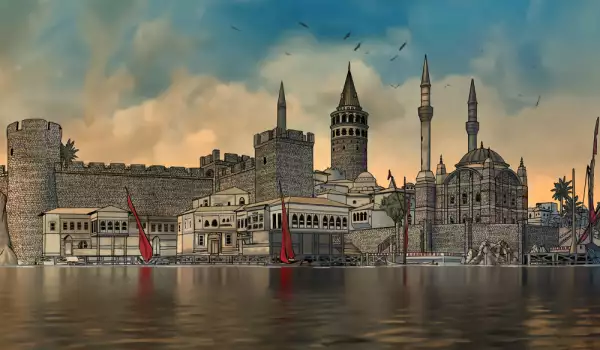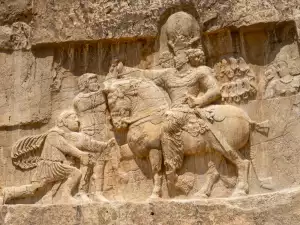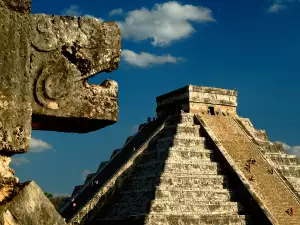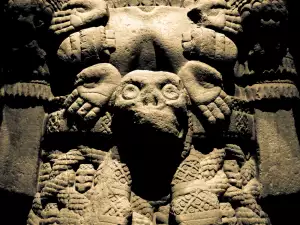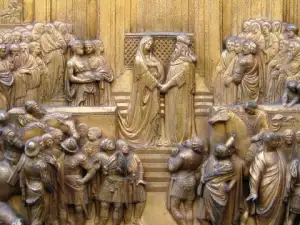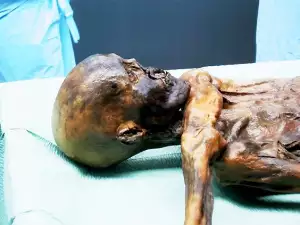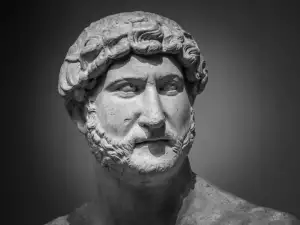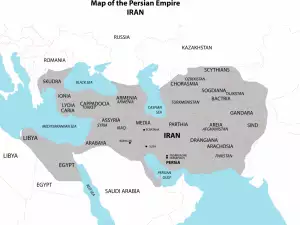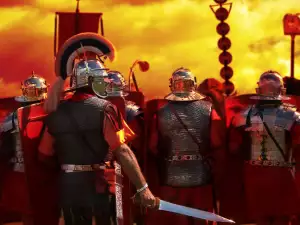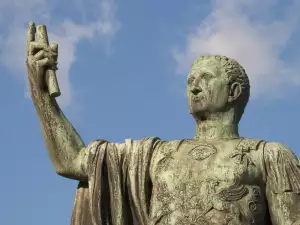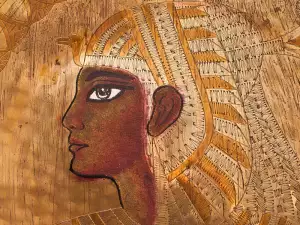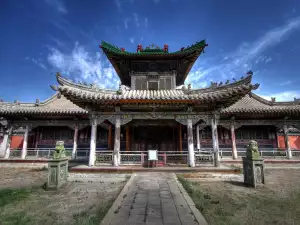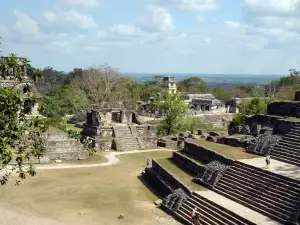In the 3rd century AD the Roman Empire fell into crisis and the capital Rome struggled to cope with its task of being the first city of the empire and the seat of the emperor. That is why Diocletian moved to the city of Nicomedia, in Asia Minor and ruled the empire from there. After him, Constantine I, called the Great, took up the construction of a new capital of hegemon. That is why the city got its name - Constantinople, the city of Constantine.
Building and rise of the new capital of the empire
The site for the construction of the other capital of the Roman Empire was chosen very well - on the shore of the Bosphorus, on the site of the ancient city of Byzantium, on the border between the Asian and European continents. Construction began in 324 and involved the efforts of over 1 million slaves and colonists. That is why it is completed in less than 6 years.
The fortress wall was designed by Emperor Constantine himself and is a whole system and the moats that surround it make the city an impregnable fortress for its time.
The interior of the city was striking with its magnificence of palaces, temples, houses of rich aristocrats, public buildings. The city of Constantine quickly became a center of science and culture. The city could not be mistaken for another, it collected so much magnificence in one place. The Bulgarians called it Tsargrad to emphasize its importance as the seat of the most influential representatives of the empire. Since it was built in a similar way of Rome, palaces, amphitheatres and aqueducts were built in the city, but unlike Rome, Constantinople was also a city of Christianity and therefore the Christian temples in it were very majestic. At the very beginning, the supreme head of the church was the bishop, but later his successors were already titled Ecumenical Patriarch.
The city remained the capital of the Eastern Empire for 1, 000 years, all the while maintaining its role as the largest, richest and most beautiful city that dominated the entire Mediterranean.
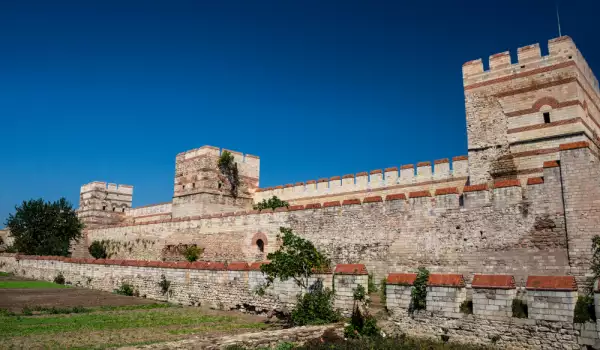
In fact, to be precise, Constantinople is the Christian capital of the world. And it becomes the world workshop of Christian culture. In it the paradigms of Christianity are created. This city is the most significant cultural achievement in the history of all Christians. The most money and effort is spent on this construction site. The most famous masters come, the most important questions are raised and resolved in many areas of architecture, fine arts, music, ecclesiastical affairs, rites. This goes on for centuries. To these facts Constantinople owes its importance, grandeur and glory, unmatched by any other place in the world, not even by the Eternal City.
Fourth Crusade and conquest of Constantinople by the Latins
In 1204, an unexpected event occurred for its time, which represents one of the most significant cultural tragedies in the Christian history of Eastern Orthodoxy - the fall of the city of Constantine under the power of the Latins from the 4th crusade.
On April 12-13th, 1204, the knights from the march, who set out to liberate the Holy Sepulcher from the infidels, instigated by the doge of Venice Enrico Dandolo and with the tacit consent of the Pope, entered Constantinople. This is a fratricidal attack by Christians against Christians and it changed Eastern Orthodoxy forever.
The reason for the invasion of the capital of Byzantium by the Crusaders was due to financial commitments made but not fulfilled by the deposed Emperor Alexius to the Crusaders, who promised to return the throne to him in return for Byzantium's support in the war against the infidels. Alexius regains the throne, but fails to pay the promised sum and therefore the capital is conquered.
With this act began the most barbaric destruction of values in the history of the world. The fact, that tons of gold and silver stocks were exported is the least important. Innumerable shrines, miraculous icons, relics of saints, altars of priceless gold, manuscripts, works of art, valuable documents were destroyed. Not only Byzantium, the entire Eastern Orthodox Christian world lost forever its spiritual and cultural heritage. The riches of Constantinople exported to the western world ensured its Renaissance. The looting and destruction continued for 57 years, until 1261, when the Romans again returned Constantinople. The city was rebuilt and continued to be the capital of the Eastern world, but it was no longer able to return its splendor and uniqueness, which it had before the Latins.
Constantinople on the eve of the Ottoman invasion
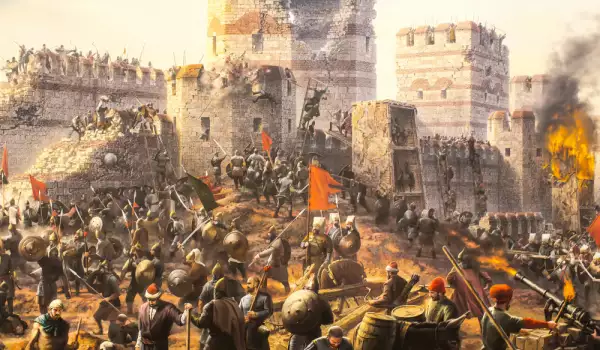
After the return of Constantinople back to Roman power at the end of the thirteenth century, it remained the capital of Byzantium, while at the same time representing Byzantium itself - apart from Constantinople, the Byzantines ruled the city's surroundings and some Aegean islands. The city itself is a pale copy of its old splendor and glory, though the city is once again being built, works of art are being created, cultural life is at its peak. In the city-state, however, there are also strong separatist sentiments and internal power struggles.
Finally, the Paleologi dynasty succeeded in usurping power from the rightful heirs, the Lascaris family. The minor heir to the throne - Laskaris was blinded, which was met with great dissatisfaction by the population and the church.
At that time, the Turks increasingly surrounded the city of Constantine, conquering territories around it, without being able to capture it, because until the middle of the 15th century they did not have the equipment that could take down the strong fortress walls of the city.
In 1452, Mehmed II Fatih became Sultan of the Turks and set himself the main goal of overtaking the city. To fulfill this task, he created new Turkish fortresses around the city, strengthened the naval blockade and gathered a huge army of about 160 thousand people, which he prepared to storm the city with.
The beginning of the siege of the city is considered to be April 5, 1453, when the sultan's huge army was stationed not far from the city walls. Emperor Constantine XI Palaeologus managed to muster only 7, 500 defenders, most of them foreigners, mainly from Genoa. The Romans did not want to join, because they did not approve of the union that the Palaeologians concluded with Rome.
Two days later, the Turks came close to the city and deployed along the entire fortress wall. The sultan and the janissary troops stand in front of the central gate - the Roman gate. To the left is the Golden Horn, where the units from Anatolia are stationed and to the right, towards the Sea of Marmara, the Rumelian units. The sultan's fleet also arrived at the city, which surrounded the ports.
The Ottoman Turks began shooting the city with cannons and destroyed the walls in places, which were quickly rebuilt by the population. Three Genoese and one Byzantine ship broke through the Turkish blockade and brought provisions to the besieged city. This also raises the spirits of the defenders, who attempt to attack the Turkish fleet, but are repulsed.
Attempted attacks on the city walls by the Turks were repulsed, but the Ottoman attackers built a siege tower higher than the city walls and built a bridge to the Galata fortress.
The decisive assault began on May 29, when the Turks made a breach in the fortress next to the main entrance to the city. Another gate was broken and the Turks had the opportunity to enter the city from two places at the same time. Constantinople falls and the last emperor of Byzantium dies, defending the city to his death along with his people.
The Sultan gives three days to sack the city. The city was literally demolished, its vast wealth was plundered, its priceless works were destroyed, the main Christian Cathedral of Hagia Sophia was turned into a mosque, as well as many other churches, 60 thousand citizens were taken into slavery, the leaders of the city who did not perish in the defense, they were killed. The Sultan established Constantinople as his capital, renaming the city Tsargrad.
Reflection of the fall of Constantine's city on the Christendom
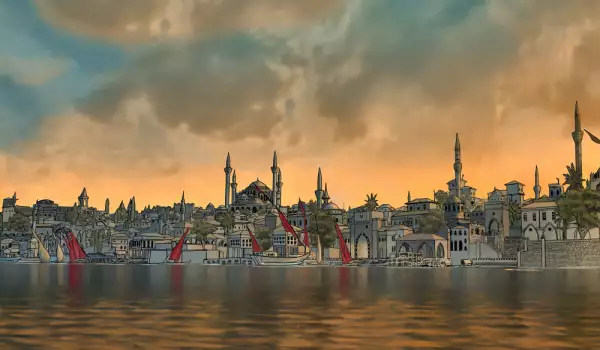
The end of Constantinople is also the end of the Byzantine Empire. This date is also accepted as the end of the Middle Ages in Europe. The last remaining small areas of the former empire were occupied by the Turks until 1461.
The date of the fall of the city marks a significant historical turning point - the demise of an entire civilization, which Christendom owes much to.
The city of Constantine the Great is where an extraordinary art was encouraged. A cosmopolitan city unprecedented for its time, in which its inhabitants saw themselves as the heirs of ancient Hellas and ancient Rome and tried to preserve their examples. They promoted learning, the Christian faith and art. Their spiritual achievements were irretrievably lost and their material wealth was looted by the enslavers. An entire era perished with Constantinople.
